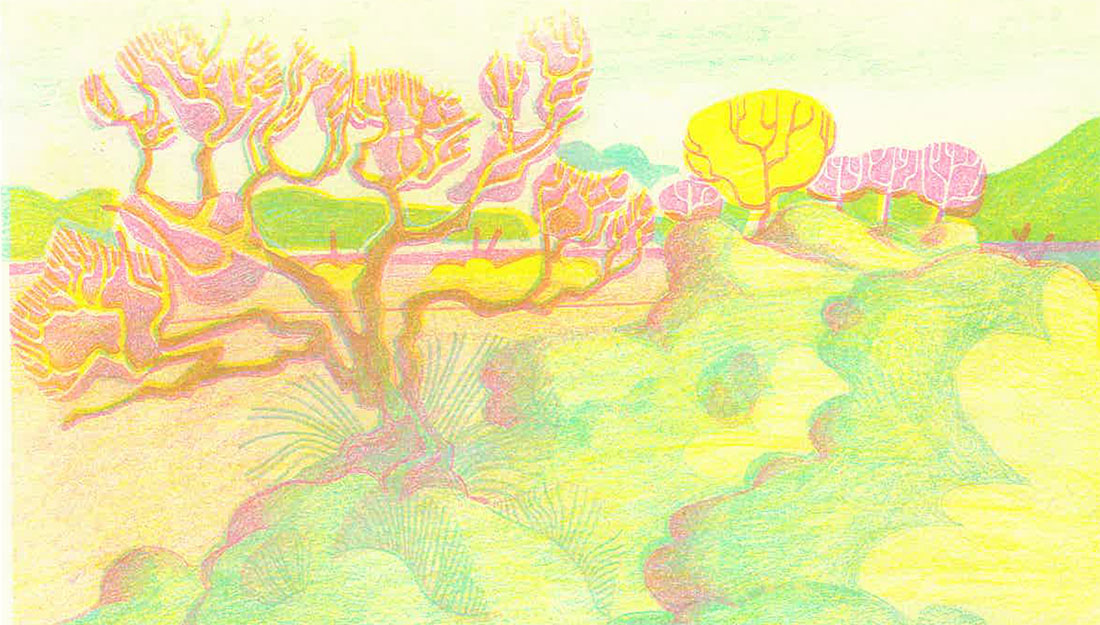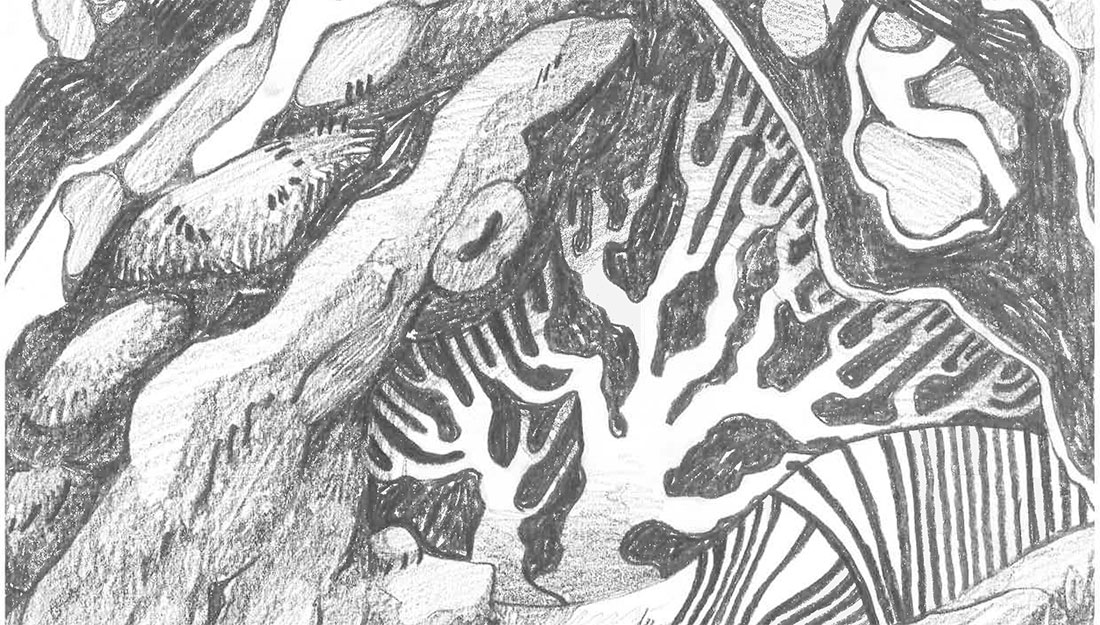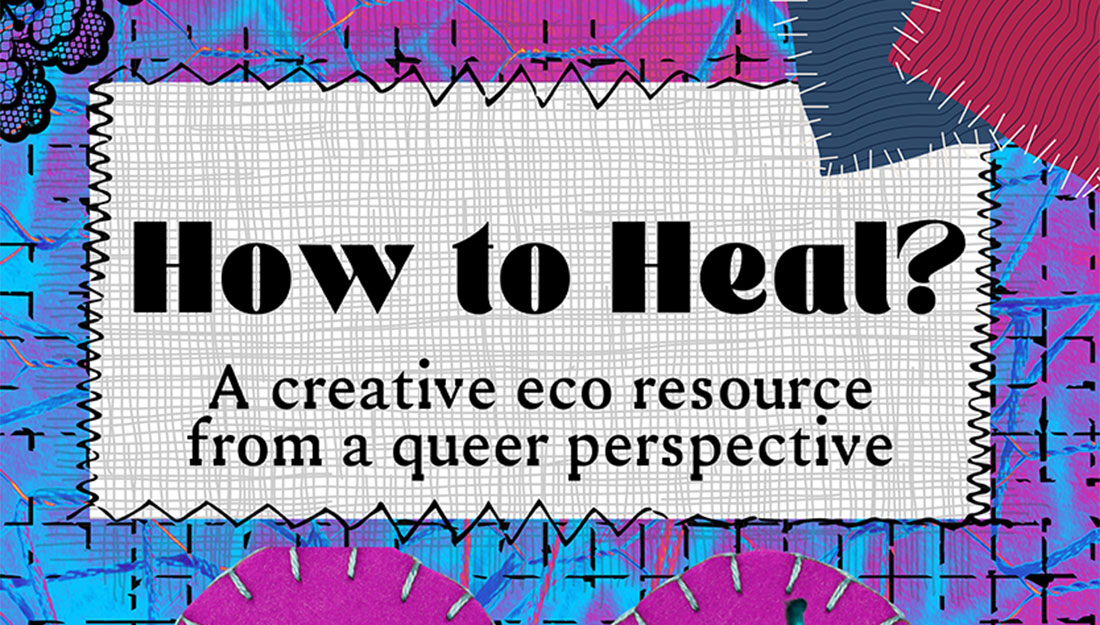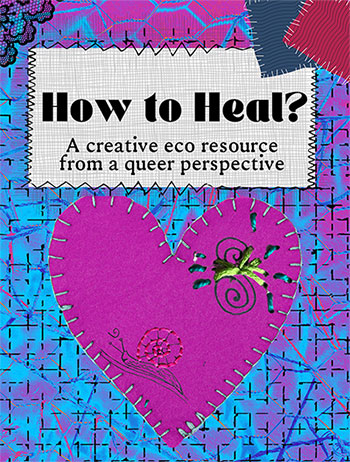A creative eco resource from a queer perspective
In partnership with Queering the Wye
How to Heal is an LGBTQ+ craft project about queerness, collaboration , community and change. Working with queer artists, activists and young people in Herefordshire we explore what it means to be queer, learn about queer ecology and how we can find affirmation in nature.
This resource to help you to explore some of these ideas. It has two strands fluidity in nature and resilience through nature.
Fluidity
Explore fluidity in nature.
Resilience
Explore resilience in nature.
Queer Ecology by Annie Higgins
Queer Ecology comes from a need to radically change our relationship to the environment. It is a way of looking at queerness and nature in partnership.
We can often make assumptions about people and the natural world – that queerness is unnatural, that nature always follows rules, or that people should be in control of the world around them. This kind of thinking builds rigid categories and hierarchies and blinds us to the vital role that chaos, diversity and connection plays in life on earth.
Queer Ecology seeks to deconstruct these harmful assumptions and binaries and imagine a world based on complexity and care. It follows on from work done by BIPOC environmentalists who have demonstrated that humans are not separate from nature, and challenged boundaries around who is able to create and define knowledge.
Queer Ecology is about approaching nature with curiosity. It is about questioning and finding creative ways to understand and connect to our world, without asking it to conform to our expectations.
From a Queer perspective, we can understand how harmful it is to reduce the complexity of life to a single biological need or category. When we see natural landscapes of vibrant biodiversity replaced by single monocultures of hyper-efficient crops, perhaps we can relate and recognise the loss and suppression of our own community.
Generations of trying to assert control over nature and human expression has caused unimaginable damage. However, Queer Ecology asserts that this damage is not irreparable. It seeks to find connection between natural and human diversity and design a future that makes space for both.
This project has brought together artists, activists and young people to imagine this future and plan how we can build tools to care for ourselves and our natural world.
We have focussed on craft skills and education, which can give us agency when we feel powerless. Craft allows us to slow down our consumption, consider our material choices and make a direct, positive, impact on the shape of the world around us. When we make as a group we form a community and direct energy towards caring for each other and our surroundings.
This approach of building with care provides mutual benefit. When we learn alongside nature and become more aware of our connection and responsibility to it, we can resist taking control and minimise our impact on it. We also learn to advocate for nature alongside ourselves. We begin to fight for a Queer future with environmental protection and connection as its foundation.
In return, we are able to engage with a world of abundance, diversity and fluidity. We can find affirmation when we see that plant and animal biology is far from binary. We can experience the mental and physical health benefits of green spaces and build resilience to overwhelming bad news by taking direct positive action.
Queer Ecology recognises that nature is queer and queerness is natural. This project invites you to consider your personal perspective, and find your own connections between your identity and the world around you.

Annie Higgins is an artist blacksmith.
Image: Risograph print by Annie.

Glossary
Queer is an umbrella term for people who are not heterosexual or are not cisgender. (Wikipedia)
Queer ecology is the endeavor to understand nature, biology, and sexuality in the light of queer theory, thus rejecting the presumption that heterosexuality and cisgenderedness constitute any objective standard. It draws from science studies, ecofeminism, environmental justice, and queer geography. These perspectives break apart various “dualisms” that exist within human understandings of nature and culture. (Wikipedia)
Binary means relating to, composed of, or involving two things. The idea that there are two genders is sometimes called a “gender binary,”
The acronym BIPOC, refers to “black, indigenous, (and) people of color”.
In agriculture, monoculture is the practice of growing one crop species in a field at a time. (Wikipedia)
Supporters and funders







